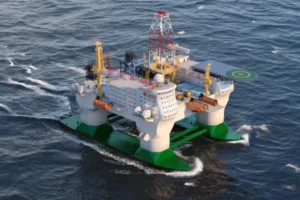Mission Mausam: Enhancing Climate Resilience in India
Key Points
Launch: Approved on September 11, 2024, by the Union Cabinet with a budget of ₹2,000 crores for two years.
Objective: To make India “Weather Ready” and “Climate Smart” by improving weather and climate services.
Institutions Involved:
India Meteorological Department (IMD)
National Centre for Medium-Range Weather Forecasting (NCMRWF)
Indian Institute of Tropical Meteorology (IITM)
Supported by INCOIS and NIOT.
Technology: High-resolution models, supercomputing systems (Pratyush and Mihir), and Doppler Weather Radars (DWRs).
Public Outreach: Tools like the Mausam app provide location-specific weather forecasts for 450 cities.
Why Mission Mausam is Needed
Agriculture: Supports farmers by providing accurate monsoon forecasts, optimizing crop planning.
Disaster Preparedness: Reduces losses from cyclones, floods, and droughts.
Rural Development: Assists in water resource management, livestock safety, and infrastructure planning.
Objectives of Mission Mausam
Enhance weather forecasting at short-term, medium-term, and seasonal scales.
Strengthen observational networks with radars, satellites, and automated weather stations.
Develop high-resolution models for better monsoon predictions.
Provide actionable advisories for agriculture, energy, and disaster management.
Build research capacity through collaborations.
Implementation Strategy
Infrastructure: Install Doppler Weather Radars, Automatic Weather Stations, and rain gauges.
Supercomputing: Use high-performance systems for advanced climate modeling.
Collaboration: Work with organizations like the WMO for improved techniques.
Public Outreach: Provide advisories via apps, SMS, and media.
Focus on the Northeast Region
Address challenges like frequent floods and landslides.
Deploy additional weather observation systems tailored to hilly terrains.
Collaborate with state governments to integrate weather data into disaster management.
Challenges
Geographical Diversity: Requires region-specific models.
Climate Uncertainty: Rapid global changes make long-term predictions harder.
Infrastructure Gaps: Remote areas need more observational systems.
Awareness: Ensuring effective use of forecasts by farmers and rural communities.
Mains Question
“Mission Mausam is a transformative initiative aimed at enhancing India’s weather and climate resilience, addressing socio-economic challenges, and ensuring sustainable development.” Critically examine the objectives, significance, and challenges of the Mission. Suggest measures to overcome these challenges.
MCQ
Q. Which of the following statements regarding Mission Mausam is/are correct?
- It aims to enhance India’s weather forecasting capabilities using high-resolution models and supercomputers.
- The initiative is spearheaded by the Ministry of Agriculture to assist farmers in improving crop yields.
- Mission Mausam focuses on strengthening observational infrastructure, including Doppler Weather Radars and Automated Weather Stations.
Select the correct answer using the codes below:
A. 1 and 2 only
B. 2 and 3 only
C. 1 and 3 only
D. 1, 2, and 3
Answer: C







